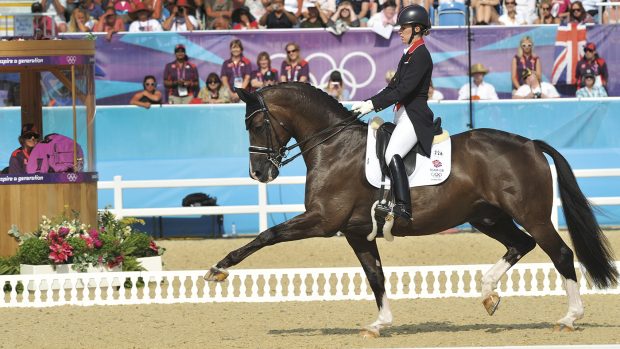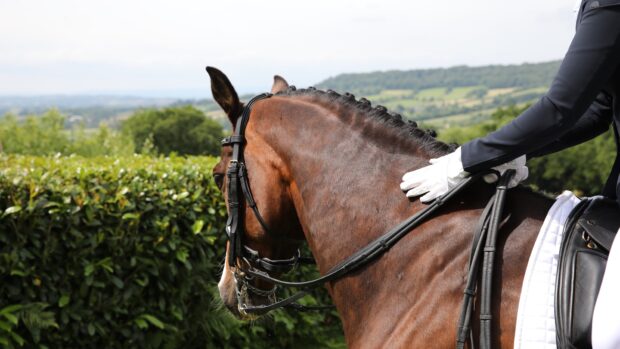Judges expect to see different things at each level, but these tips to help improve your dressage scores from grand prix rider Bobby Hayler (pictured) and five-star judge Peter Storr at the 2020 British Dressage National Convention are relevant no matter what level you compete at…
8 ways to improve your dressage scores
1. Make the most of your time before you enter the arena
“Don’t forget that before the bell rings, this is still your warm-up time around the arena so don’t feel you have to look perfect straight away,” says Bobby. “Even after the bell goes you still have 45 seconds and time to get ready. Make sure your horse is on the aids, and listening to your seat and legs. You could use transitions, or send the trot or canter forwards to get the horse in front of your leg.”
2. Make a good first impression
“The initial centre line is the first time the judges are taking a good look at you,” points out Bobby. “You want to make sure you ride down the centre line with confidence, thinking, ‘I want a 10’.”
3. Think about telling a story
“During a dressage test you are telling the judge a story, that has a beginning, a middle and an end,” says Bobby. “This is especially the case once you get to medium and advanced medium levels, where you really start going going from one movement straight into another movement. It is very important to have clear suppleness and uniform bend so you can move fluently from one movement to another.”
4. Remember the meaning of ‘halt’
“The perfect halt is not only about being square,” says Peter. “It’s also very important that the horse is obedient and immobile because the halt is also about standing still – if a horse is tense it’s not going to stand still.”
5. Focus on accuracy
“Tests are about preparation, it’s why we ride from one marker to another,” says Bobby. “You’ll lose marks if you don’t ride the line properly, so be careful that you are riding movements to the letter because it will affect the overall score.”
Continued below…
Watch the Horse & Hound Awards 2020 virtual ceremony
6. Move on from mistakes
“Try not to over-think about mistakes you’ve already made in a test,” advises Bobby. “You can’t do anything about that movement once it has happened, but you have more movements in front of you where you have the chance to ride for a 10. Focus on those and how to make them better.”
7. Tailor your last-minute training to the level
“It’s usually better if horses are working at home at a higher level than the one they are competing, as then they are more confident and they know the work really well,” says Peter. “But it’s important that in the days just before the test you stop practising higher level movements that aren’t in the test, like flying changes before a medium test for example.”
8. Know your strengths and weaknesses
“Always read your test sheets and don’t take it negatively if a judge says you need more of this or that – it’s good because you can take it home and work on it with your trainer,” says Bobby. “Sit down and think about what your horse’s highlights are, and what is a bit tricky, and in a test try to pick up the marks on the movements your horse finds easier.”
Horse & Hound magazine, out every Thursday, is packed with all the latest news and reports, as well as interviews, specials, nostalgia, vet and training advice. Find how you can enjoy the magazine delivered to your door every week, plus options to upgrade to access our H&H Plus online service which brings you breaking news as it happens as well as other benefits.




